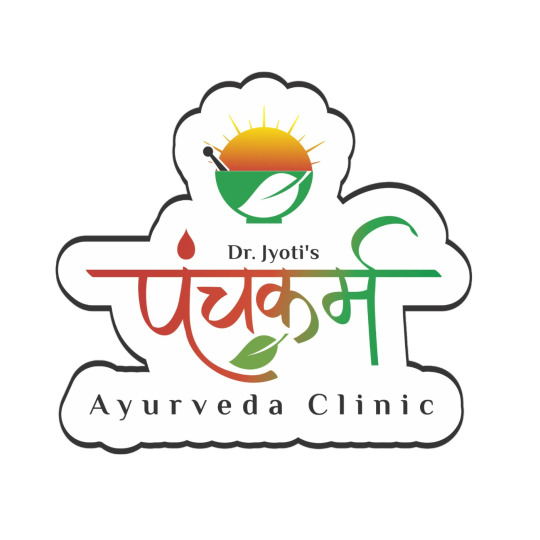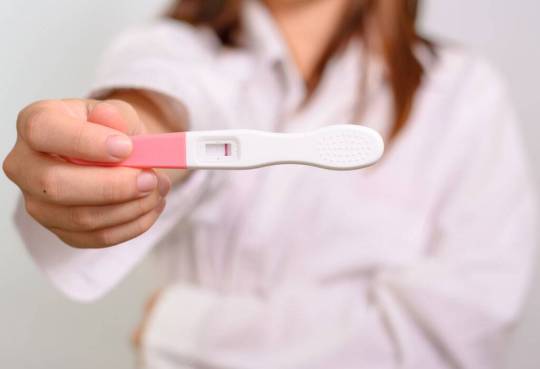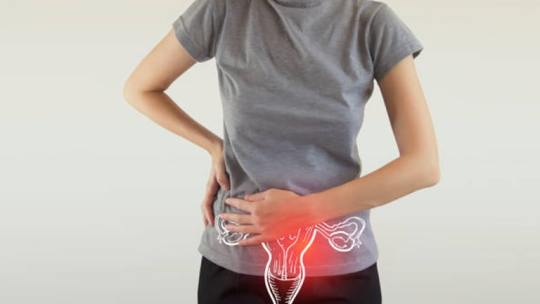#adenomyosis treatment in india
Explore tagged Tumblr posts
Text
Ayurvedic Doctor in Indore | Ayurvedic Clinic India
Dr. Jyoti is Best Ayurvedic Doctor in Indore, her hospital is right now in the top ayurvedic clinics of Indore, India.






























#best ayurvedic doctor in indore#ayurvedicmedicine#ayurveda#ayurvedic#top ayurvedic doctor in indore#ayurvedic doctor indore#ayurvedic clinic indore#ivf center in indore#ivf treatment in indore#best ivf center in indore#Derma Hair clinic#hair specialist in indore#hair doctor in indore#best weight loss center in india#yoga classes indore#best yoga classes in indore#yoga courses in indore#pcos doctor in indore#adenomyosis treatment in india#female infertility in india#infertility in women in india#female infertility treatment in india#endometriosis treatment india#endometriosis surgery cost in india#best fetal medicine specialist#high risk pregnancy treatment#male infertility treatment in ayurveda#ayurvedic medicine to increase sperm count#best ayurvedic medicine for male infertility#skin treatment indore
3 notes
·
View notes
Text
Best Homeopathic Remedies for Adenomyosis-A Holistic Path to Healing

Adenomyosis is a challenging condition affecting many women, particularly those in their 30s and 40s. It occurs when the endometrial tissue, which normally lines the uterus, grows into the muscular wall of the uterus. This often leads to symptoms such as heavy menstrual bleeding, severe cramps, chronic pelvic pain, and discomfort during intercourse. Traditional treatments may include hormonal therapies or even surgical options, but many women are turning to alternative therapies like homeopathy for relief. Homeopathic treatment for adenomyosis is gaining popularity due to its holistic approach and focus on long-term wellness.
Understanding Adenomyosis
Adenomyosis is often confused with endometriosis, but the two conditions differ. While endometriosis involves the growth of endometrial tissue outside the uterus, adenomyosis involves the tissue growing into the uterine muscle itself. The exact cause of adenomyosis remains unknown, but it is thought to be related to hormonal imbalances, particularly elevated levels of estrogen. Common symptoms of adenomyosis include:
Heavy or prolonged menstrual bleeding
Intense menstrual cramps
Chronic pelvic pain
Pain during intercourse
Abdominal bloating
Infertility in some cases
These symptoms can significantly impact a woman's quality of life, leading to both physical and emotional distress. For those seeking a natural and non-invasive solution, homeopathic treatment for adenomyosis offers an effective alternative.
Why Choose Homeopathy for Adenomyosis?
Homeopathy is a system of medicine that treats the person as a whole rather than just targeting the symptoms. The philosophy behind homeopathy is based on the principle of "like cures like," meaning that a substance that causes symptoms in a healthy person can, when diluted, treat similar symptoms in a sick person. The best homeopathic remedies for adenomyosis aim to stimulate the body's natural healing mechanisms, addressing both the physical symptoms and underlying emotional factors.
Advantages of Homeopathy for Adenomyosis:
Individualized Treatment: Homeopathy recognizes that every patient is unique, and treatment is tailored to the individual's specific symptoms, constitution, and emotional state.
Natural and Safe: Homeopathic remedies are derived from natural substances and are prepared in highly diluted forms, making them safe for long-term use without side effects.
Non-Invasive: Unlike surgical options, homeopathy provides a non-invasive approach to managing adenomyosis, preserving the integrity of the uterus.
Holistic Healing: Homeopathy addresses the root cause of adenomyosis, offering relief from symptoms while promoting overall well-being.
Best Homeopathic Remedies for Adenomyosis
When it comes to treating adenomyosis with homeopathy, the focus is on finding a remedy that matches the individual's specific symptoms. Below are some of the best homeopathic remedies for adenomyosis that are commonly used:
Belladonna: Belladonna is often recommended for women who experience sudden, intense pain in the pelvic region along with heavy menstrual bleeding. This remedy is particularly effective when the pain is throbbing and the abdomen feels hot to the touch. Belladonna helps to reduce inflammation and provides relief from the severe cramps associated with adenomyosis.
Sepia: Sepia is a powerful remedy for women who feel exhausted, irritable, and emotionally drained, especially during their menstrual cycles. It is commonly prescribed for those experiencing severe menstrual cramps, a sense of heaviness in the pelvic area, and a bearing-down sensation. Sepia is also effective for women who feel indifferent towards their loved ones or experience mood swings.
Calcarea Carbonica: Calcarea Carbonica is suitable for women who suffer from prolonged, heavy periods and feel cold, sluggish, and overweight. This remedy helps to regulate the menstrual cycle, reduce excessive bleeding, and alleviate symptoms of bloating and indigestion. Women who benefit from Calcarea Carbonica often have a tendency to sweat easily and crave eggs or sweet foods.
Pulsatilla: Pulsatilla is often indicated for women with irregular periods and shifting pain. This remedy is particularly useful for those who feel better in fresh air and seek comfort and reassurance from others. Pulsatilla helps to regulate the menstrual cycle and alleviate pain that moves from one area to another, making it one of the best homeopathic remedies for adenomyosis.
Magnesium Phosphoricum: Known for its ability to relieve spasmodic pain, Magnesium Phosphoricum is an excellent remedy for women with severe menstrual cramps that improve with warmth and pressure. This remedy works by relaxing the muscles, reducing pain, and providing relief from the intense discomfort associated with adenomyosis.
Thlaspi Bursa Pastoris: Thlaspi Bursa Pastoris is another effective remedy for women who experience excessive menstrual bleeding with large clots. It is particularly helpful for those whose periods are frequent and prolonged, leading to anemia and fatigue. This remedy helps to control heavy bleeding and provides relief from the symptoms of adenomyosis.
Fraxinus Americana: Fraxinus Americana is recommended for women with an enlarged uterus and a sensation of weight or heaviness in the pelvic region. This remedy is effective in reducing the size of the uterus, controlling bleeding, and alleviating pain. Women who benefit from Fraxinus Americana often describe their periods as being profuse and prolonged.
The Role of a Homeopathic Practitioner
The success of homeopathic treatment for adenomyosis largely depends on the expertise of the practitioner. A qualified homeopathic doctor will conduct a thorough assessment of the patient's symptoms, medical history, and emotional state. This detailed evaluation is crucial in selecting the most appropriate remedy that resonates with the patient's unique constitution.
During the consultation, the practitioner may ask questions about the patient's menstrual history, pain patterns, emotional responses, and lifestyle factors. This comprehensive approach ensures that the treatment plan is tailored to the individual's specific needs, leading to long-term relief and overall well-being.
Aura Homeopathy-Your Partner in Healing
Aura Homeopathy, a leading homeopathic clinic in India, is dedicated to providing effective and personalized homeopathic treatment for adenomyosis. With a team of experienced homeopathic doctors, Aura Homeopathy offers a holistic approach to healing, addressing both the physical and emotional aspects of adenomyosis.
At Aura Homeopathy, the treatment process begins with an in-depth consultation, where the patient's symptoms, lifestyle, and emotional state are carefully assessed. Based on this evaluation, a customized homeopathic treatment plan is formulated to address the root cause of adenomyosis and provide lasting relief.
Aura Homeopathy's approach is patient-centered, ensuring that each individual receives the care and attention they need to achieve optimal health. The clinic also emphasizes the importance of a balanced lifestyle, including proper diet, regular exercise, and stress management, in conjunction with homeopathic treatment for the best results.
Success Stories from Aura Homeopathy
Many women have found relief from adenomyosis through homeopathic treatment for adenomyosis at Aura Homeopathy. These success stories highlight the effectiveness of homeopathy in managing adenomyosis symptoms and improving the quality of life for patients.
One such patient, Ms. Anjali Verma, shares her experience: "After years of suffering from painful periods and heavy bleeding, I finally found relief through homeopathy. The doctors at Aura Homeopathy took the time to understand my condition and provided a treatment plan tailored to my needs. Today, I feel healthier and more energetic than ever before."
Another patient, Mrs. Renu Gupta, adds: "Homeopathy has been a game-changer for me. I was diagnosed with adenomyosis and was struggling with chronic pelvic pain. The team at Aura Homeopathy provided a holistic treatment approach that addressed both my physical and emotional symptoms. I am now pain-free and enjoying life to the fullest."

Conclusion
Adenomyosis can be a debilitating condition, but there is hope through homeopathic treatment for adenomyosis. Homeopathy offers a safe, natural, and holistic approach to managing adenomyosis, addressing both the physical symptoms and the underlying emotional factors.
Aura Homeopathy is committed to providing high-quality, personalized care for women suffering from adenomyosis, helping them regain their health and well-being. If you are looking for an alternative to conventional treatments, consider exploring the benefits of best homeopathic remedies for adenomyosis at Aura Homeopathy. Visit their website at https://www.homeopathydoctorindia.com/diseases/adenomyosis to learn more and take the first step towards natural healing.
#Homeopathy Treatment for Adenomyosis in India#Adenomyosis Homeopathic Treatment India#best homeopathic remedies for adenomyosis#homeopathic treatment for Adenomyosis
0 notes
Text
Myths and Facts About Hysterectomy: Debunking Common Misconceptions

In India, the rate of hysterectomy varies from 1.7% to 9.8% across different regions of the country, reflecting its diversity. Hysterectomy, the surgical removal of the uterus, is a procedure surrounded by many myths and misconceptions. For women considering this surgery, it's essential to separate fact from fiction. Often, the myths surrounding this surgery may cause women who need the procedure to live healthily not to opt for it, causing further medical complications.
Hysterectomy is an aggressive procedure and often a treatment recommended as a final resort and permanent solution for the symptoms experienced by women. So, it is crucial for women to know the facts about the risks involved in this surgery and also be aware of the myths surrounding the surgery. It will help in debunking hysterectomy misconceptions and ensure women are able to gain a clearer understanding of their treatment options.
Common Reasons for Undergoing a Hysterectomy
Hysterectomies are done to treat several gynaecological problems. Common reasons include:
Uterine fibroids which are non-cancerous growths causing pain and heavy bleeding.
Endometriosis is when tissue similar to the uterine lining grows outside the uterus.
Adenomyosis is when the uterine lining invades the uterine muscle.
Gynaecological cancers like those of the uterus, cervix, and ovaries.
Other reasons include chronic pelvic pain that can't be treated with other methods.
A prolapsed uterus where the uterus drops into the vaginal canal, and severe abnormal uterine bleeding that can't be controlled.
Understanding these reasons helps women make better decisions about their health and treatment options, always with guidance from their healthcare providers. Now that we have discussed the common reasons for undergoing a hysterectomy let’s learn more about the myths and facts surrounding it.
Myths and Facts
Myth: Hysterectomy is the only treatment for most gynaecological conditions.
Fact: While hysterectomy is a definitive treatment for conditions like uterine fibroids, endometriosis, and certain cancers, it's important to know that it's not always the first or only option. Many gynaecological conditions can be managed effectively with medications, hormonal therapies, or less invasive procedures. For instance, medications can help shrink fibroids or manage endometriosis symptoms, and hormonal therapies can regulate menstrual cycles without surgery. Hysterectomy is often recommended in serious cases where the symptoms cannot subside with other treatment options.
Myth: Hysterectomy always leads to early menopause.
Fact: Hysterectomy alone (removal of the uterus) does not cause menopause unless the ovaries are also removed (oophorectomy). If the ovaries are left intact, hormone production continues, and natural menopause occurs at the appropriate age. This distinction is crucial because preserving the ovaries can help maintain hormonal balance and reduce the immediate onset of menopausal symptoms. However, since the uterus is removed, hysterectomy leads to the cessation of the menstrual cycle. This doesn’t necessarily mean the onset of menopause.
Myth: Hysterectomy negatively impacts sexual function.
Fact: Contrary to popular belief, many women experience better sexual function after a hysterectomy. This is especially true for those who have chronic pelvic pain or discomfort from conditions like fibroids or endometriosis. By removing the source of pain, hysterectomy can enhance overall sexual health and well-being. However, individual experiences may vary, and open communication with healthcare providers is essential to address any concerns. A thorough understanding between the partners about what to expect after a hysterectomy is also crucial in ensuring that the sexual experience of both partners is as per their expectations. The partner of the person undergoing the surgery in these cases has a significant role to play in these scenarios. This is done to ensure that the woman undergoing the surgery feels as comfortable and back to their usual self as possible after the surgery.
Myth: Recovery from a hysterectomy is long and arduous.
Fact: The recovery period after a hysterectomy depends on various factors, such as the type of surgery (abdominal, vaginal, or laparoscopic) and the patient's overall health. While abdominal hysterectomies may require a longer recovery period, minimally invasive techniques such as laparoscopic surgery often result in shorter hospital stays, less postoperative pain, and quicker recovery times. Most women can resume normal activities within a few weeks following surgery, although strenuous activities may need to be avoided for a more extended period. Patients need to follow a dedicated recovery routine while recovering from a hysterectomy. Any failure to follow this routine and guidelines specifically can lead to an elongation of the recovery period. It can also increase your risk of postoperative complications.
Myth: Hysterectomy is a highly risky procedure with many serious complications.
Fact: Like any surgical procedure, hysterectomy carries potential risks, such as infection, bleeding, and damage to surrounding organs. However, significant complications are rare, particularly when performed by experienced surgeons in modern healthcare settings. Advances in surgical techniques, including robotic-assisted and laparoscopic approaches, have further reduced the risks associated with hysterectomy, making it a safe and effective treatment option for many women. It is crucial to ensure that you get your surgery from an experienced surgeon to minimise your operative and postoperative risks associated with hysterectomy.
Myth: A hysterectomy ensures that all gynaecological symptoms will be relieved.
Fact: While a hysterectomy can alleviate symptoms like pelvic pain and heavy bleeding, it may not address underlying hormonal issues or other gynaecological conditions not directly related to the uterus. Patients may often need to go for other surgical treatments that involve the removal of fallopian tubes, ovaries, and even a part of the vagina. This may be required if a hysterectomy is unable to treat the symptoms appropriately. So, a hysterectomy is not a cure-all surgical treatment.
Myth: Hysterectomy increases the risk of weight gain.
Fact: Hysterectomy itself does not cause weight gain. However, changes in activity level or hormone fluctuations post-surgery may affect weight, but these are individual and manageable with proper lifestyle adjustments. If you are concerned about postsurgical weight gain, you can talk to your doctors regarding the lifestyle changes and any hormonal therapies you may need to ensure the risk can be mitigated. Weight gain can lead to further gynaecological complications and even increase your risk of diabetes and hypertension. It is crucial that the risk of weight gain is appropriately discussed with your surgeon before going through a hysterectomy.
Myth: Hysterectomy is the same as castration.
Fact: Facts about uterus removal clarify that hysterectomy involves the removal of the uterus, not the ovaries. Castration involves removing the ovaries, which can induce menopause-related symptoms immediately. Ovary removal is not mandatory during a hysterectomy.
Myth: Young women cannot undergo hysterectomy.
Fact: While less common in younger women, hysterectomy can be necessary for severe conditions like cancer or persistent gynaecological issues. Preservation of fertility or other organs may be possible, depending on the situation. So, women of any age may need to go through this surgery based on underlying conditions.
Myth: Hysterectomy impacts hormone production significantly.
Fact: Hysterectomy may affect hormone levels if the ovaries are removed (oophorectomy). If ovaries remain, hormone production typically continues, and menopause occurs naturally later in life. Hormonal imbalances can be a common occurrence post hysterectomy. However, they are managed by doctors with lifestyle changes and hormonal therapies if required.
Myth: Hysterectomy always requires a long hospital stay.
Fact: Thanks to improvements in minimally invasive surgical methods, many hysterectomies can now be done on an outpatient basis or with a brief hospital stay. Based on the underlying condition and the extent to which the surgical removal of internal organs is required, the hospital stay may vary.
Myth: Hysterectomy is only for older women.
Fact: Hysterectomy can be necessary for women of any age, depending on their medical condition. It's not just for older women. Women of any age may need to go through a hysterectomy to treat underlying gynaecological conditions.
Myth: Hysterectomy means complete removal of all reproductive organs.
Fact: A hysterectomy only involves the removal of the uterus. The ovaries and fallopian tubes may or may not be removed, depending on the individual case and medical advice. If other organs apart from the uterus need to be removed, the surgery is different in such cases. Hysterectomy is not an umbrella term.
Benefits, Risks, and Considerations of Hysterectomy
Benefits
A hysterectomy can relieve chronic pain from conditions such as fibroids or endometriosis. It can also reduce or eliminate heavy menstrual bleeding, enhancing quality of life and daily activities.
Risks
Potential complications from surgery include infection, bleeding, or damage to surrounding organs. If the ovaries are removed, there can be an impact on hormonal balance, possibly leading to early menopause. Recovery time and associated discomfort post-surgery are also important risks to consider.
Considerations
The effect on fertility and the future ability to have children is a major consideration. It is also important to evaluate the availability of less invasive alternative treatments. Understanding the type of hysterectomy recommended, whether total, partial, or radical, is crucial. Discussing personal health impacts and post-surgery expectations with a healthcare provider is essential for making an informed decision.
Conclusion
Understanding hysterectomy myths and facts is crucial for making informed decisions about women's health. While hysterectomy can be helpful for certain conditions, it's important for women to explore other options and talk about their concerns with a healthcare provider. Consulting with aGynaecologist in Delhi can help clear up misconceptions and allow women to approach hysterectomy decisions confidently, knowing the benefits, risks, and expected outcomes. You can check out MASSH to learn more about hysterectomies and also check out the specialised minimally invasive robotic surgeries offered at MASSH. We specialise in ensuring accurate surgery guided by modern medical tools that allow patients to recover quickly and have minimal postoperative risks. Consult with our specialists today to avail yourself of our world-class surgical services and facilities.
Source: https://massh.in/
1 note
·
View note
Text
Dr. Gaurav Gangwani: Expert in Uterine Fibroids Treatment in India
INTRODUCTION
Dr. Gaurav Gangwani is a leading expert in uterine fibroids treatment in India, pioneering non-surgical uterine fibroid embolization to improve women's health and quality of life.

Revolutionizing Uterine Fibroids Treatment in India: Dr. Gaurav Gangwani’s Expertise in Embolization
The Burden of Uterine Fibroids
Uterine fibroids are benign tumors that develop in the muscle tissue of the uterus, affecting a significant number of women during their reproductive years. While not cancerous, fibroids can cause severe symptoms, including heavy menstrual bleeding, pelvic pain, and pressure on the bladder and bowel, leading to a reduced quality of life. Traditional treatment has often involved surgical procedures, most notably hysterectomy—the complete removal of the uterus.
Dr. Gaurav Gangwani: A Pioneer in Non-Surgical Treatment
Dr. Gaurav Gangwani, a leading interventional radiologist based in Mumbai, has become a prominent figure in the treatment of uterine fibroids, adenomyosis, and arterio-venous malformations through uterine fibroid embolization (UFE). His pioneering work in this field has provided women with effective, non-surgical alternatives that preserve the uterus and drastically reduce recovery time.
Uterine Fibroid Embolization (UFE) Explained
UFE is a minimally invasive procedure that involves making a small incision in the groin or wrist to insert a catheter into the uterine arteries. Dr. Gangwani then directs embolic agents through the catheter, which block the blood flow to fibroids, causing them to shrink and symptoms to alleviate. This procedure is performed under local anesthesia with light sedation, allowing for a comfortable patient experience.
Advantages of UFE Over Hysterectomy
Uterus Preservation
One of the most significant advantages of UFE is the preservation of the uterus, which is not possible with a hysterectomy. This is crucial for women who may consider pregnancy in the future or wish to retain their uterus for personal reasons.
Less Invasive with Fewer Complications
UFE involves a small incision and no removal of any part of the body, leading to significantly fewer complications compared to the surgical risks associated with hysterectomy, which include bleeding, infection, and prolonged recovery.
Shorter Recovery Time
Women undergoing UFE typically return to normal activities much quicker than those who undergo a hysterectomy. Most patients can go home the same day of the procedure and return to full activity within a week or two.
Effective for Multiple Conditions
In addition to treating fibroids, Dr. Gangwani successfully uses UFE to manage adenomyosis and arterio-venous malformations, conditions that are often challenging to treat surgically.
Dr. Gangwani’s Role in Advancing Fibroid Treatment
Dr. Gangwani is not only a practitioner but also an advocate for patient education and the advancement of interventional radiology techniques. His commitment to providing state-of-the-art, patient-friendly options elevates the standard of care for women suffering from gynecological conditions across India.
Conclusion: Leading a Paradigm Shift in Gynecological Health
Dr. Gaurav Gangwani’s leadership in uterine fibroid embolization is leading a paradigm shift in the treatment of uterine fibroids and other related conditions in India. By offering a safe, effective, and less invasive alternative to hysterectomy, Dr. Gangwani is not only improving immediate patient outcomes but also impacting the long-term health and well-being of women. His innovative approach and dedication to his patients exemplify the best in modern medical treatments, offering hope and improved quality of life to many.
0 notes
Text
Uterus Transplant in India

Uterus transplantation is a complex surgical procedure that involves transplanting a healthy uterus from a donor into a woman who does not have a functional uterus. It offers hope to women who desire to conceive and carry a pregnancy but are unable to do so due to various reasons. This comprehensive article provides an overview of uterus transplantation, including an introduction to the procedure, common causes necessitating a transplant, symptoms associated with uterine conditions, the transplant procedure itself, and post-transplant treatment options.
Causes Necessitating a Uterus Transplant
Several conditions may require a uterus transplant:
1. Uterine Factor Infertility (UFI): UFI refers to the inability to conceive or carry a pregnancy due to structural abnormalities, absence of the uterus from birth (congenital absence), or the removal of the uterus (hysterectomy). Uterus transplantation may be considered for women with UFI who desire to experience pregnancy and childbirth.
2. Uterine Diseases: Certain diseases and conditions can lead to uterine dysfunction, such as Asherman's syndrome (scarring inside the uterus), uterine fibroids, adenomyosis (thickening of the uterine lining), and certain congenital malformations. Uterus transplantation may be an option for women with these conditions.
Symptoms of Uterine Conditions
Uterine conditions can present a variety of symptoms, which may include:
1.Infertility: A Roadblock to Parenthood
One of the most distressing symptoms associated with uterine conditions is infertility, which refers to the inability to conceive or carry a pregnancy to term. Uterine abnormalities, such as uterine fibroids, polyps, or structural deformities, can interfere with implantation or affect the development of a healthy pregnancy. Understanding the underlying causes of infertility and seeking appropriate medical intervention can help couples navigate the challenges and explore available options for starting or expanding their families.
2.Menstrual Irregularities: Unraveling the Cycle
Menstrual irregularities encompass a spectrum of abnormalities in menstrual bleeding patterns. Women with uterine conditions may experience irregular or heavy menstrual bleeding, prolonged periods, or even the absence of periods altogether. These symptoms can disrupt daily activities, cause physical discomfort, and signal underlying hormonal or structural imbalances within the uterus. Seeking medical evaluation is crucial to identify the specific condition causing the irregularities and guide appropriate treatment measures.
3.Pelvic Pain: Unveiling the Source of Discomfort
Persistent or recurrent pelvic pain is a common symptom associated with uterine conditions. This pain often coincides with menstrual periods and can range from mild discomfort to severe cramping. Endometriosis, adenomyosis, or pelvic inflammatory disease are some of the conditions that can contribute to pelvic pain. Proper diagnosis, pain management strategies, and targeted treatments can alleviate symptoms and improve the quality of life for women affected by uterine-related pelvic pain.
4.Abnormal Uterine Bleeding: Navigating the Red Flags
Excessive or abnormal uterine bleeding between periods can be a distressing symptom of uterine conditions. Women may experience unpredictable spotting, prolonged bleeding, or heavy flow, which can disrupt daily routines and affect emotional well-being. Identifying the cause of abnormal uterine bleeding through diagnostic evaluations, such as ultrasound or hysteroscopy, is essential for implementing appropriate treatment approaches tailored to each woman's specific condition.
5.Painful Intercourse: Addressing Intimacy Challenges
For women with uterine conditions, sexual intercourse can become a source of discomfort or pain. Painful intercourse, known as dyspareunia, may arise due to conditions like uterine fibroids, endometriosis, or pelvic inflammatory disease. Open communication with healthcare providers can help identify the underlying causes and explore treatment options, including pain management strategies and targeted therapies, to restore intimacy and improve sexual well-being.
6.Difficulty Getting Pregnant: Exploring the Fertility Puzzle
Difficulty getting pregnant despite regular unprotected intercourse can be disheartening for couples. Uterine conditions, such as uterine fibroids, polyps, or scarring, can interfere with fertility by affecting sperm transport, implantation, or the overall environment necessary for a successful pregnancy. Seeking a comprehensive fertility evaluation, including imaging studies and fertility testing, can help identify the specific factors contributing to infertility and guide couples toward appropriate interventions, such as assisted reproductive technologies or surgical interventions.
Uterus Transplant Procedure
1. Donor Selection:
Uterus donors are typically deceased individuals who have consented to organ donation. The donor uterus is carefully evaluated for compatibility and suitability for transplantation. Factors such as blood type, size compatibility, and overall health are considered.
2. Surgical Procedure:
Uterus transplantation is a complex procedure performed under general anesthesia. The donor uterus is retrieved, and the recipient's non-functioning uterus is removed (hysterectomy) in a separate surgical procedure. The donated uterus is then transplanted into the recipient's pelvis and carefully connected to the surrounding blood vessels, supporting ligaments, and vaginal canal.
3. Post-Transplant Care:
After the transplant, the recipient undergoes close monitoring to ensure proper graft function and prevent rejection. Immunosuppressive medications are prescribed to suppress the immune system and reduce the risk of organ rejection. Regular follow-up visits, imaging studies, and biopsies are conducted to monitor the health and function of the transplanted uterus.
Treatment after Uterus Transplantation
1. Immunosuppressive Medications:
Immunosuppressive drugs are a crucial component of post-uterus transplant treatment. These medications are prescribed to prevent organ rejection by suppressing the recipient's immune system. The dosage and type of medications may be adjusted over time to maintain the balance between preventing rejection and minimizing side effects.
2. Regular Monitoring and Follow-up:
Close monitoring is necessary to assess the health and function of the transplanted uterus. This includes regular follow-up visits, imaging studies, and uterine biopsies. The recipient's hormone
levels, menstrual cycles, and any potential complications are carefully monitored.
3. Psychological Support:
Uterus transplantation is a complex and emotionally significant procedure. Psychological support and counseling are vital for the recipient to cope with the challenges and expectations associated with the transplant, as well as the potential outcomes and the emotional impact of the procedure.
4. Assisted Reproductive Techniques:
After a successful uterus transplant, assisted reproductive techniques such as in vitro fertilization (IVF) may be utilized to help the recipient achieve pregnancy. The use of donor eggs or the recipient's own eggs may be considered, depending on individual circumstances and fertility factors.
Cost in India
Uterus transplant in India is an emerging medical procedure that offers hope for women with uterine factor infertility (UFI) to have a chance at carrying and delivering a child. The cost of uterus transplant in India can vary depending on several factors, including the hospital or clinic, the type of transplant, the specific medical team involved, and individual patient requirements.
The average cost of a Uterus transplant in India is around USD 250,000-350,000. This includes the cost of the surgery, hospital stay, medications, and follow-up care.
Uterus transplantation provides a ray of hope for women with uterine factor infertility or certain uterine conditions, offering the possibility of experiencing pregnancy and childbirth. This complex surgical procedure, combined with post-transplant treatment and regular monitoring, allows recipients to potentially fulfill their desire for motherhood. Uterus transplantation is a rapidly advancing field, and ongoing research and advancements in surgical techniques and immunosuppressive therapies continue to improve the outcomes and expand the possibilities for women facing uterine-related challenges.
0 notes
Link
adenomyosis bladder risk factors, adenomyosis cost in India, adenomyosis presentation, adenomyosis treatment diagnosis, Adenomyosis Treatment In India, how to test for adenomyosis, progesterone for adenomyosis, stages of adenomyosis, what happens if adenomyosis is left untreated.
#what happens if adenomyosis is left untreated#adenomyosis bladder risk factors adenomyosis cost in India adenomyosis presentation adenomyosis treatment diagnosis Adenomyosis Treatment In
0 notes
Link
#adenomyosis treatment#adenomyosis causes#treatment of Adenomyosis#symptoms of adenomyosis#india#IVF#Adenomyosis
0 notes
Photo

COPE WOMEN'S CLINIC Endometriosis and PCOS are the most common leading gynaecological issues affecting women. Endometriosis affects 1 in 10 women globally and PCOS 1 in 10. Women suffering with PCOS and endometriosis need special attention and help for managing these conditions for life. There is no cure for them but can be managed successfully with a dedicated team. Ours is a first of its kind center in India dedicated to the treatment of PCOS and Endometriosis. We at COPE clinic are striving hard to give women a life which she deserves.COPE WOMEN'S CLINIC offer an integrated approach for Endometriosis and adenomyosis patients. Patients will see a team of laparoscopic excision specialist, dietician, physiotherapist, neuropelviologist, colorectal surgeon, and urosurgeon depending on the symptoms and involvement of endometriosis. We will formulate an individualized plan for each patient which suits her needs.COPE WOMEN'S CLINIC aim is to educate our women so they can be diagnosed early and managed better. We have created a multidisciplinary team for endo and PCOS care.If you are a woman suffering with PCOS or Endometriosis, don’t hesitate to contact our specialist team who is ever ready to help you with any of the symptoms of these disorders affecting you.COPE WOMEN'S CLINIC offer an integrated approach for PCOS treatment. Patients will see a team of gynaecologist, dietician, dermatologist, endocrinologist, weight loss educator, reproductive specialist and psychologist. We will collaborate with each patient to formulate an individualized plan for each patient which works best for her. We are also developing an education and support group for PCOS and exercise programme for women who are keen on integrating exercise into their lives.COPE WOMEN'S CLINIC is to address diagnosis and management of disease and research. Also we aim to focus on adolescent or teenage girls, raise more awareness among this age group so that we can “CATCH THEM YOUNG” and prevent long term complications.We are committed to Diagnose endometriosis and PCOS in teenage years and provide multidisciplinary approach to these women throughout their lifespan Find a cure for endometriosis and PCOS through Research
1 note
·
View note
Photo

The article Best IVF center in Hyderabad is that the gathering of best IVF focuses in an urban center, Hyderabad, Chennai, Bangalore, and diverse totally different urban areas; it's a vital treatment for a grouping of problems, as an example, adenomyosis, tube-peritoneal disrupting impacts, girdle bond, PCOD, and unexplained desolateness. Here a Best Hospital in India is giving some IVF centers in India and Hyderabad.
4 notes
·
View notes
Text
Online Consultation with IVF Specialist
What should you expect during your second consultation with an IVF specialist?
You should have completed all your basic fertility testing. This will include a baseline transvaginal scan (TVS) to assess ovarian reserve and a semen analysis to assess the male partner's sperm count, motility, and morphology. Depending on your age, additional tests such as AMH, tubal patency, and hormonal profiling may be required.
So, with second advice, fertility experts will know four things:
Is your ovarian reserve (the number of eggs in your ovaries) adequate?
Are sperm parameters (sperm count, motility, and morphology) normal?
Are the fallopian tubes open?
Is the uterus structurally normal? (Control our polyps, adenomyosis, fibroids, and so on.)
The answers to the four questions above, as well as your age, will determine the course of your future fertility treatment. In reality, there are only a few treatment options available, ranging from the least invasive timed intercourse to the most invasive IVF. The least invasive treatment options are often the ones that require the most time and patience. While the most invasive options provide the quickest results.
So, you'd know your treatment options through the IVF & Fertility Online Consultation with the IVF specialist. The treatment options will be explained to you, along with the success rate, the time required, the number of clinic visits required, and the approximate cost of treatment. Couples usually take a few days to process this information before deciding what to do.
Treatment options to consider before beginning IVF?
It all depends on what your reports indicate. If the test results show adequate ovarian reserve, open fallopian tubes, and optimal sperm count and motility, some treatment options such as IUI (Intra Uterine Insemination) can be considered. IUI treatment, when performed correctly by a trained fertility specialist, produces positive results. IUI success rates can range from 12-15%. Couples should be patient, IUI may not be successful in just one cycle.
Please see our blog for more information on IUI success rates.
Causes of IUI Failure and Chances of Successful Pregnancy After Failed IUI
With so much information available on the Internet and other media, patients don't want to waste time trying less invasive options and instead ask their doctor if they should try IVF.
To clarify, the patient's treatment options are not imposed. The options are discussed with the patient and the couple decides which treatment option to use based on factors such as age, duration of infertility, success rate, cost of the procedure, and time required to complete the treatment.
When is the best time to start IVF treatment?
If your fertility specialist suggests and recommends IVF, the sooner you complete it.
There is a significant difference in IVF success rate at age 30 versus age 37. This 7-year difference in oocyte age makes a significant difference. When oocyte age is lesser, the quality of embryos and their genetic competency improve significantly.
Please see our blog for more information on IVF success rate.
IVF Success Rate in India
Embryo freezing (cryopreservation in medical terms) is a proven science that allows 100% embryo survival. Nowadays, it is best to consider oocyte or egg freezing at an early age in young females who are professionally driven and want to postpone childbearing for professional reasons.
Couples should be aware that it is preferable to freeze embryos/oocytes as early as possible. It could be the best decision they've ever made for their baby.
Do you have any advice for patients preparing for an IVF cycle?
IVF requires a much more holistic approach; it is not only necessary to prepare your body for the treatment, but it is also necessary to prepare your mind. One should keep their expectations realistic, plan to invest sufficient time in the procedure, be prepared to endure some discomfort, and plan the financial aspect so that they do not experience stress while undergoing the IVF cycle.
Related blog: The role of counseling and second opinion in treating infertility
#ivf online consultation#free fertility consultation#online fertility consultation#online ivf consultation
0 notes
Text
https://www.drjyotiayurveda.com/Adenomyosis

Ensure the best Adenomyosis Treatment in India from Dr. Jyoti Ayurveda Indore.
A reverse abnormal condition of endometriosis in which endometrium grows in the uterine walls is termed as Adenomyosis. This is not a life taking disease. It can be at certain places in the uterus or grow all over it and causes damage to the uterus from within. Here the tissue breaks and blood spots occur. Adenomyosis Treatment in India with Dr. Jyoti Ayurveda Indore


#Adenomyosis#adenomyosis treatment in india#adenomyosis treatment#adenomyosis treatment in Indore#adenomyosis treatment in indore cost#health#women health
0 notes
Text
Best Homeopathy Dr in India | Aura Homeopathy

Homeopathy has become a preferred choice for many seeking natural and holistic healthcare solutions. For those in search of the Best homeopathy Dr in India, Aura Homeopathy stands out as a trusted name, offering personalized and effective treatments for various chronic and acute conditions. With a focus on individualized care, Aura Homeopathy has garnered a reputation for delivering high-quality homeopathic solutions.
Why Aura Homeopathy is the Best Choice
Aura Homeopathy is led by some of the most experienced and qualified homeopathic doctors in India. The clinic takes pride in its patient-centered approach, where each individual is given detailed attention to diagnose and treat their ailments holistically. The Best homeopathy Dr in India at Aura Homeopathy ensures that every patient receives a customized treatment plan tailored to their specific health needs. By focusing on the root cause of the condition rather than just alleviating the symptoms, Aura Homeopathy promotes overall wellness and long-term healing.
Special Focus on Adenomyosis Treatment
One of the specialized areas of treatment at Aura Homeopathy is adenomyosis, a painful uterine condition that leads to severe menstrual cramps, heavy bleeding, and pelvic discomfort. Unlike conventional treatments that often provide only temporary relief, Aura Homeopathy offers a natural and side-effect-free approach. The Best homeopathy Dr in India uses advanced homeopathic techniques to address the root causes of adenomyosis, helping patients achieve significant relief and improved quality of life.
Aura Homeopathy's approach to treating adenomyosis includes a thorough consultation process where the patient's lifestyle, medical history, and overall health are taken into account. This holistic assessment allows the doctors to create a personalized remedy that not only eases symptoms but also helps restore the body’s natural balance. Many patients have experienced remarkable improvements with Aura Homeopathy’s targeted treatments for adenomyosis.

Commitment to Holistic Healing
At Aura Homeopathy, patient satisfaction is a top priority. The clinic's team of homeopathic experts is dedicated to providing comprehensive care with a compassionate touch. The Best homeopathy Dr in India ensures continuous follow-ups and support, ensuring that patients feel confident and informed throughout their treatment journey. This commitment to holistic healing has made Aura Homeopathy a leading destination for those seeking effective and natural healthcare solutions.
If you're looking for the Best homeopathy Dr in India to address your health concerns with a natural approach, visit Aura Homeopathy today. Experience the benefits of personalized homeopathic care and take the first step towards a healthier, happier life.
Aura Homeopathy is the go-to clinic for anyone searching for the Best homeopathy Dr in India. With its patient-first approach, expert doctors, and a focus on treating the root cause of health issues, Aura Homeopathy has become a trusted choice for those looking for natural and effective healthcare solutions. Visit Aura Homeopathy and discover the power of homeopathy for yourself.
#Best homeopathy Dr in India#Homeopathy Doctor in India#Homeopathic Doctor in India#Top Homeopathy doctor in India
0 notes
Text
Best Treatment for Laparoscopic Hysterectomy Surgery in Mumbai
Uterus also called as the womb in colloquial, is the pear-shaped muscular organ that is fundamental part of the reproductive system in women. Located between the bladder and bowels, it provides structural integrity and nurtures the fertilized ovum to develop it into a foetus. It nourishes and carefully holds the baby in place until he/she is mature enough to be delivered.
Hysterectomy: Removal of the Birth Place
In short, Uterus is the birthplace of the baby and Hysterectomy is the removal of this birthplace from the women. Hysterectomy is recommended by the gynaecologist or hysterectomy surgeon when removal of the uterus is the only possible solution for the treatment of problems like uterine fibroids, endometriosis, abnormal vaginal bleeding, uterine cancer, Adenomyosis and more.
Know more at: Best Treatment for Laparoscopic Hysterectomy Surgery in Mumbai
Contact Us:
Bombay Hospital And Medical Research Centre 203, Level 2, New Wing, 12, New Marine Lines, Mumbai 400020 Monday,To, Saturday 12:00 pm to 4:00 pm
Nanavati Hospital S.V. Road, Vile Parle (West), Mumbai 400 056, India. Monday,To, Saturday 5.00 pm to 7.00 pm
Surya Hospitals 101-102, Mangal Ashirwad, S V Road, Santacruz West, Mumbai, Maharashtra 400054. Mon, Tue and Wed 7.00 pm to 8.00pm Appointment +91 7045115577 Email – [email protected]
#Laparoscopic Hysterectomy Surgery In Mumbai#Best Gynecologist In Mumbai For Infertility#Laparoscopic Hysterectomy Surgery Doctors In Mumbai#Hysterectomy Laparoscopic Surgery In Mumbai
0 notes
Text
Endometriosis Treatment
How endometriosis causes infertility?
Infertility is one of the consequences of endometriosis. To begin with, the prospect of going through a painful intercourse can impede the possibility of conception. Otherwise, scarring or adhesions of internal tissues and organs in the pelvic region may restrict adequate movement of the egg down the fallopian tube to the uterus. Endometriosis can cause an overproduction of fertilization and implantation causing hormones known as prostaglandins, thus causing infertility.
How endometriosis causes infertility?
There are certain fertility tests that may be done to arrive at a diagnosis of endometriosis. A laparoscopic procedure can identify problems like scarring and endometriosis.
Endometriosis Treatment
Endometriosis Treatment can begin following a laparoscopic procedure and quite often, the best chances for a woman with endometriosis to get pregnant are within the first couple of years the following treatment. There are many women with endometriosis who get pregnant without any treatment at all. And there are some others who get pregnant and bear children successfully by adopting simple dietary and lifestyle modifications.
Endometriosis may cause painful periods, persistent pain within the girdle space, physiological state and alternative symptoms. The signs will vary from delicate to severe. Treatment choices embrace painkillers, secretion treatments and surgery.
Understandably, management of endometriosis may be a long-term process. Doctors prescribe medications to halt the progress of the condition. Surgery is recommended only when absolutely necessary. Patients are usually unaware of the disease and endometriosis treatment modalities, despite the hardships they face in balancing childlessness and the severity of their problem.
Women who want to conceive may require specialized treatments like In Vitro Fertilization (IVF). It may be one of the last options for women affected by endometriosis to get pregnant and bear children successfully. This treatment is said to be better suited to women who are over 35 years of age.
The sheer number of women diagnosed with endometriosis is alarming. Endometriosis is known to be affecting the lives of over 25 million women in India alone, and there are millions more who may be ignorant about the problem, most of who are in their reproductive age. Patients are often ignorant about the disease, resulting in delayed presentation to the gynecologists. Early diagnosis offers the best chance for effective endometriosis treatment.
What is endometriosis?
The endometrium is the tissue that lines within the female internal reproductive organ (uterus). Endometriosis may be a condition wherever mucosa tissue is made outside the female internal reproductive organ. It is ‘trapped’ within the girdle space and lower tummy (abdomen) and, rarely, in alternative areas within the body.
What causes endometriosis?
There are many theories over the years. the liner of the female internal reproductive organ (uterus) is termed the mucosa. One theory was that some cells from the mucosa get outside the female internal reproductive organ into the girdle space. They get there by spilling backwards on the Fallopian tubes after you have an amount.
Patches of endometriosis tend to be ‘sticky’ and will be part of organs to every alternative. The medical term for this is often adhesions. to Illustrate, the bladder or intestine could ‘stick’ to the female internal reproductive organ. giant patches of adenomyosis could kind into cysts that bleed monthly after you have an amount. The cysts will fill with dark blood and area unit called ‘chocolate cysts’.
What area unit the symptoms of endometriosis?
Patches of endometriosis will vary in size from the dimensions of a pinhead to giant clumps. many ladies with endometriosis don’t have any symptoms. If symptoms develop they will vary, and embrace those listed below.
The symptoms of endometriosis will disagree from girl to girl. you’ll don’t have any symptoms in the least. one among the foremost common symptoms is long girdle pain lasting six months or additional. This appears like amount pain and will precede or throughout your amount.
Other symptoms you’ll have include:
changes to your periods, corresponding to serious trauma
pain throughout sex
depression
extreme weariness
unexplained difficulties turning into pregnant
blood in your pee
How will endometriosis treatment progress?
If endometriosis is left untreated, it becomes worse in regarding four in ten cases. It gets higher while not treatment in regarding two in ten cases. For the remainder, it stays regarding constant. endometriosis isn’t a cancerous condition.
Complications typically exist in ladies with severe untreated endometriosis. to Illustrate, giant patches of endometriosis will typically cause an obstruction of the intestine or of the tube from the urinary organ to the bladder (the ureter).
What area unit the aims of endometriosis treatment?
The main aims of the endometriosis treatment area unit to boost symptoms corresponding to pain and serious periods and to boost fertility if this is often aroused. There area unit varied treatment choices that area unit mentioned below.
0 notes
Text
Global Adenomyosis Treatment Market Growth Rate Upto 2027
Adenomyosis Treatment Market
Adenomyosis Treatment Market Overview:
The Maximize Market research report gives you a complete report of the Adenomyosis Treatment Market. The study focuses on developing Market trends and important growth factors to assist Market participants in identifying opportunities in the Adenomyosis Treatment Market. The research provides a comprehensive overview of the Market, as well as Market financials such as Market size from 2015 to 2020, with 2020 as the base year and forecast years 2021-2027. The breadth and segments of the Adenomyosis Treatment Market are covered in the Maximize Market Research report, which categorises it by product type, application areas, and geographies. The Market segmentation prioritises specific Markets and prospects over individual segments. North America, Europe, APAC, South America, and MEA are the major regions of the world included in the report. This provides a revenue forecast for each region from 2021 to 2027.
COVID-19 Impact on Adenomyosis Treatment Market:
Different racial and ethnic groups reacted differently to the COVID-19 dislike. Inequities in the social determinants of health, such as income and wealth, access to and use of health care, education, occupation, discrimination, and housing, are all linked. Economic headwinds will come from a variety of directions for emerging Market and developing nations. Even this grim prognosis is fraught with uncertainty and huge dangers to the negative. The pace with which the crisis has engulfed the global economy may provide insight into the depth of the recession. Our highly skilled and informed team is always innovating and delivering innovative solutions to our clients, all while utilising the most cutting-edge technologies.
Get Sample PDF Copy:
https://www.maximizemarketresearch.com/request-sample/71423
The key manufacturers in the Adenomyosis Treatment Market
• Bayer AG
• Johnson & Johnson Consumer, Inc.
• Merck KGaA
• Novartis AG
• Pfizer, Inc.
• Ferring B.V.
• Specialty European Pharma
• Contura
This Maximize Market research report shows the possible economic benefits of investing in the Adenomyosis Treatment Market to provide a greater understanding of the industry. Not only does the research provide a bright view for the Market, but it also analyses the drawbacks and risks that may arise for investment or competitiveness as a result of the emergence of some unfavourable aspects. The study's research analysts and industry speakers share their forecasts of the Adenomyosis Treatment industry. The goal of this Maximize Market Research report is to compile the opinions and recommendations of the industry leaders who were contacted throughout the research.
Adenomyosis Treatment Market Regional Analysis Includes:
Asia-Pacific (Vietnam, China, Malaysia, Japan, Philippines, Korea, Thailand, India, Indonesia, and Australia)
Europe (Turkey, Germany, Russia UK, Italy, France, etc.)
North America (the United States, Mexico, and Canada.)
South America (Brazil etc.)
The Middle East and Africa (GCC Countries and Egypt.)
Read complete report along with TOC:
https://www.maximizemarketresearch.com/market-report/global-adenomyosis-treatment-market/71423/
The overall purpose of the Maximize Market research report is to determine Market priorities and bottlenecks. The paper also offers advice on how to best handle the risks posed by new and disruptive technologies. Most importantly, referring to this report assists Market participants in staying informed of changing Market dangers and providing the best advice possible to Market participants, as well as the introduction or amendment of regulatory processes. This Maximize Market Research report study contains results and suggestions tailored to all Market players, investors, stakeholders, and other participants in the global Adenomyosis Treatment Market. This Maximize Market research report will serve as a valuable resource for those looking to acquire a competitive advantage in the Market.
Adenomyosis Treatment Market Segmentation :
Adenomyosis Treatment Market, By Type
• Focal
• Adenomyoma
• Diffuse
• Others
Adenomyosis Treatment Market, By Diagnosis
• Endometrial Biopsy
• Ultrasound
o Transabdominal
o Transvaginal/Endovaginal
• Magnetic Resonance Imaging (MRI)
The study examines these categories in depth, as well as their Market financials, such as Market size from 2015 to 2020, with 2020 as the base year and forecast years 2021-2027.
Contact us:
MAXIMIZE MARKET RESEARCH PVT. LTD.
3rd Floor, Navale IT park Phase 2, Pune Banglore Highway,
Narhe,Pune, Maharashtra 411041, India.
Phone No.: +91 20 6630 3320
Email: [email protected]
Website: www.maximizeMarketresearch.com
0 notes
Text
Adenomyosis Treatment Market Trends and Forecast 2021-2027
Adenomyosis Treatment Market
The scope of the MMR report includes a detailed study of global and regional markets for adenomyosis treatment with the reasons given for variations in the growth of the healthcare industry in certain regions. The major driver for the global market for adenomyosis treatment growth is the worldwide prevalence of adenomyosis. The growing awareness about adenomyosis besides its treatment is booming the adenomyosis treatment market globally by creating the supply, demand, and sales for new therapies and drugs, along with advanced medical technology-focused to the adenomyosis. Henceforth, new opportunities are arising for the adenomyosis treatment market growth. On the other hand, the market in developing economies can face hurdles as various people are not aware of this medicinal problem and so adenomyosis treatment opportunities is hampered to an extent.
Introduction of Adenomyosis Treatment market :
Maximize Market Research report is a user-based library of a Adenomyosis Treatment Market report database, delivers comprehensive reports with a detailed analysis of changing market trends, key segments, top investment organisations, value chain, regional landscape, and competitive scenario.
Each and every insights presented in the reports published by expert group of Maximize Market Research, which is derived from primary interviews with top officials from leading companies of the domain concerned. Report’s secondary data research methodology includes deep online and offline research and discussion with expert professionals and analysts in the industry. In report, Adenomyosis Treatment market reports, industry trends have been explained on the macro level, which is expected to help to finding outline market landscape and probable future issues.
Request for free sample:
https://www.maximizemarketresearch.com/request-sample/71423
COVID-19 Impact on Adenomyosis Treatment market:
The report has identified detailed impact of COVID-19 on Adenomyosis Treatment market in regions such as North America, Asia Pacific, Middle-East, Europe, and South America. The report provides Comprehensive analysis on alternatives, difficult conditions, and difficult scenarios of Adenomyosis Treatment market during this crisis. The report briefly elaborates the advantages as well as the difficulties in terms of finance and market growth attained during the COVID-19. In addition, report offers a set of concepts, which is expected to aid readers in deciding and planning a strategy for their business.
Ask your queries regarding the report:
https://www.maximizemarketresearch.com/market-report/global-adenomyosis-treatment-market/71423/
Adenomyosis Treatment market Segmentation:
Adenomyosis Treatment Market size is studied using various approaches and analyses in this research report to provide reliable and in-depth information about the industry. It is segmented into numerous segments to cover various aspects of the market for a better understanding.
Adenomyosis Treatment Market Regional Insights:
Asia-Pacific (Vietnam, China, Malaysia, Japan, Philippines, Korea, Thailand, India, Indonesia, and Australia)
Europe (Turkey, Germany, Russia UK, Italy, France, etc.)
North America (the United States, Mexico, and Canada.)
South America (Brazil etc.)
The Middle East and Africa (GCC Countries and Egypt.)
Key players:
The research report includes the current Adenomyosis Treatment market size of the market and its growth rates based on 5-year statistics and records with company summary of Key players:
• Bayer AG • Johnson & Johnson Consumer, Inc. • Merck KGaA • Novartis AG • Pfizer, Inc. • Ferring B.V. • Specialty European Pharma • Contura
Prime Reasons to purchase a Adenomyosis Treatment Market research report:
The goal of this research report is to help consumers to gain a more information and clearer understanding of the industry. The Adenomyosis Treatment market growth analysis includes development trends, competitive landscape analysis, investment plan, business strategy, opportunity, and key regions development status for international markets.
The Adenomyosis Treatment market overview and the analysis of several affecting elements such as drivers, restraints, and opportunities.
Porter's Five Force Analysis and SWOT analysis are used to define, characterise, and analyse the market competition landscape, with a focus on key players.
Extensive analysis into the global Adenomyosis Treatment competitive landscape
Identification and analysis of micro and macro elements that influence and will influence market growth.
A comprehensive list of major market players in the global Adenomyosis Treatment industry.
In the Adenomyosis Treatment market, it provides a descriptive study of demand-supply chaining.
Statistical study of certain key economic statistics
Figures, charts, graphs, and illustrations are used to clearly describe the market.
About Us:
Maximize Market Research provides syndicate as well as custom made business and market research on 12,000+ high growth emerging technologies & opportunities in Chemical, Healthcare, Pharmaceuticals, Electronics & Communications, Internet of Things, Food and Beverages, Aerospace and Defense and other manufacturing sectors.
0 notes